Publication Spotlights Sasaki’s Innovative Research Initiatives
Learn more about research projects from across the practice
 Sasaki
Sasaki
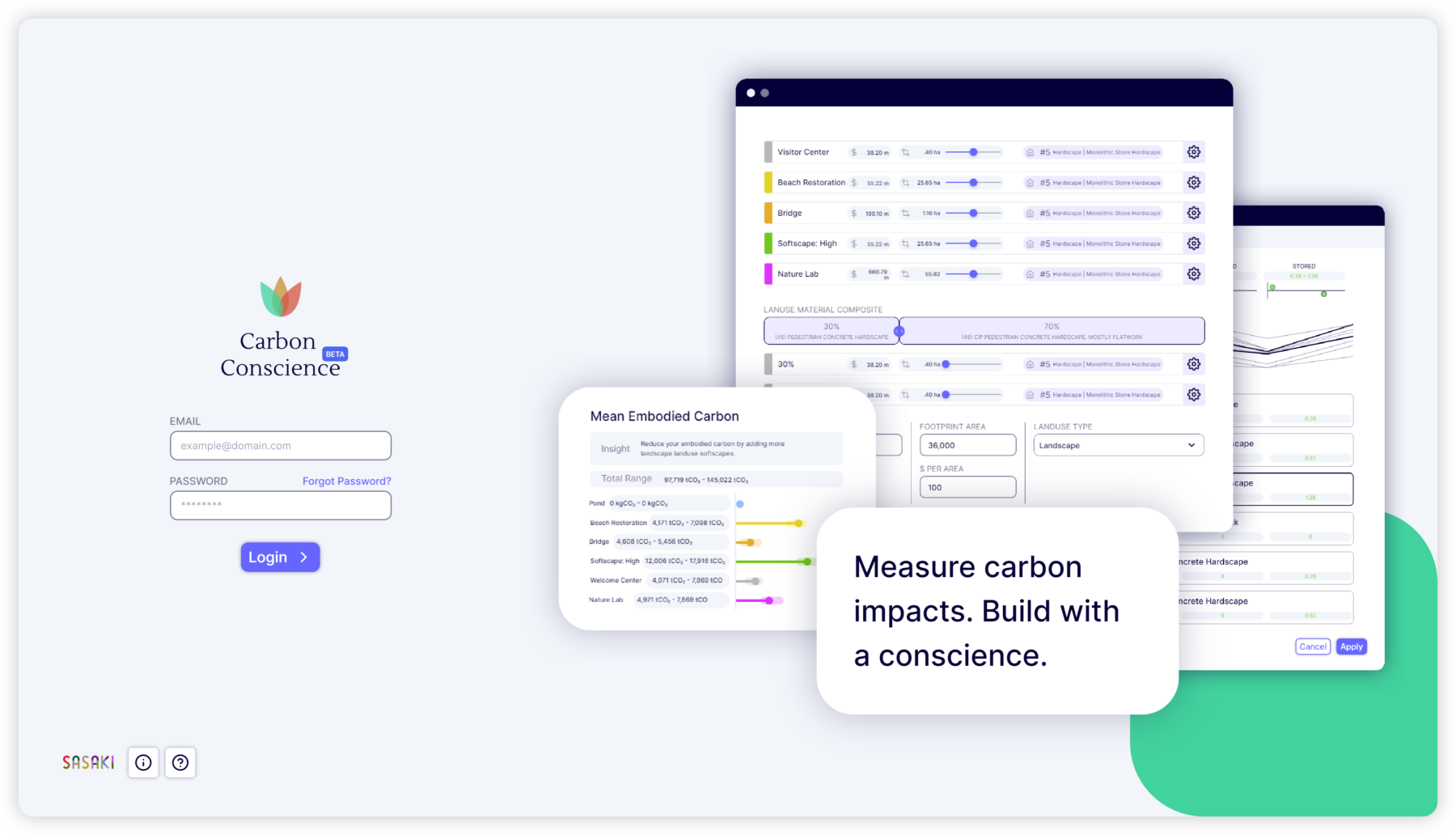
Building on a year-long internal research project, Sasaki has developed the Carbon Conscience App, a free tool to help designers assess carbon impact from the early stages of planning.
As designers and planners, we read the IPCC Report on Climate Change with added urgency. We understand that more than half of global carbon emissions derive from the built environment. Our building and infrastructure materials and construction contribute to operational carbon as well as embodied carbon (2018 Global ABC report, EIA). This is our challenge, but also our opportunity: how can we design with a Carbon Conscience?
Standard carbon-tracking tools for architects and landscape architects are geared to projects already in advanced design stages, where quantities and materials are modeled. But what about preliminary planning decisions that determine the future of our environment? In urban design projects, many decisions that lead to high carbon emissions are made early in the planning process, and so that stage offers the greatest opportunities for impacting the ultimate outcomes. How can we measure embodied carbon of our designs from the earliest concept design phase? How can we think holistically about carbon in design, not just embodied carbon in construction materials and methods, but also stored and sequestered carbon in living systems?
Building on a year-long internal research project to develop a database of carbon materials for early-stage design, Sasaki has developed the Carbon Conscience App to help designers assess carbon impact from the early stages of planning.
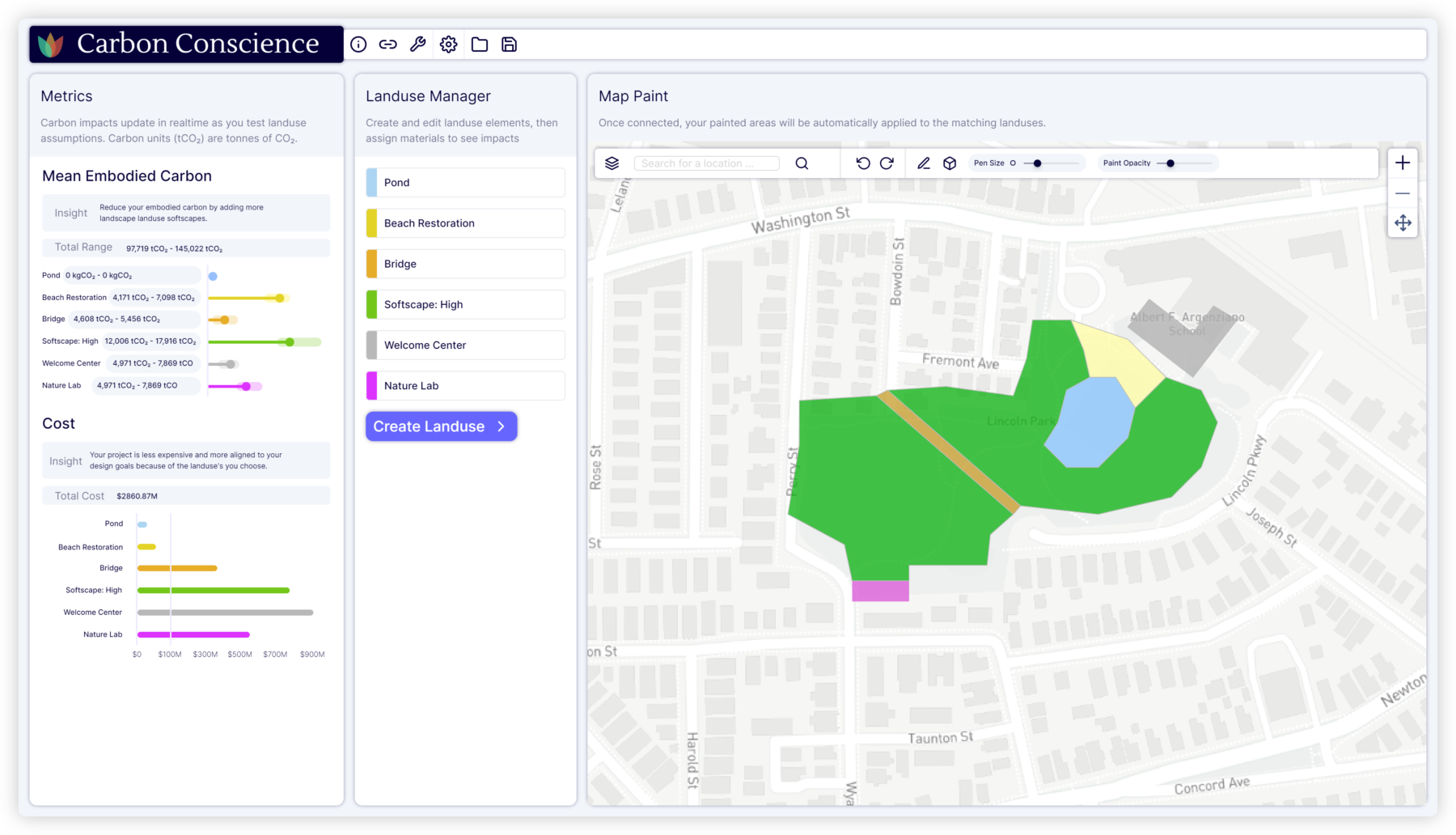
Designers sketch site plans of buildings and landscapes, assign land uses, number of floors, and basic materials decisions and /or ecosystem typologies
Using the app in early concept design, designers sketch site plans of buildings and landscapes, assign land uses, number of floors, and basic materials decisions and /or ecosystem typologies. Given that input, the app instantly estimates the potential for carbon emissions, carbon storage and carbon sequestration for design alternatives. The user can compare design options, test alternate land uses, structural systems, and landscape and façade materials—and see the impact of their choices. By switching from turf to meadow, from steel to mass timber, from concrete sidewalks to brick, Carbon Conscience can inform our choices early in the design process, laying the framework for lower, neutral, or positive carbon projects in detailed design phases.
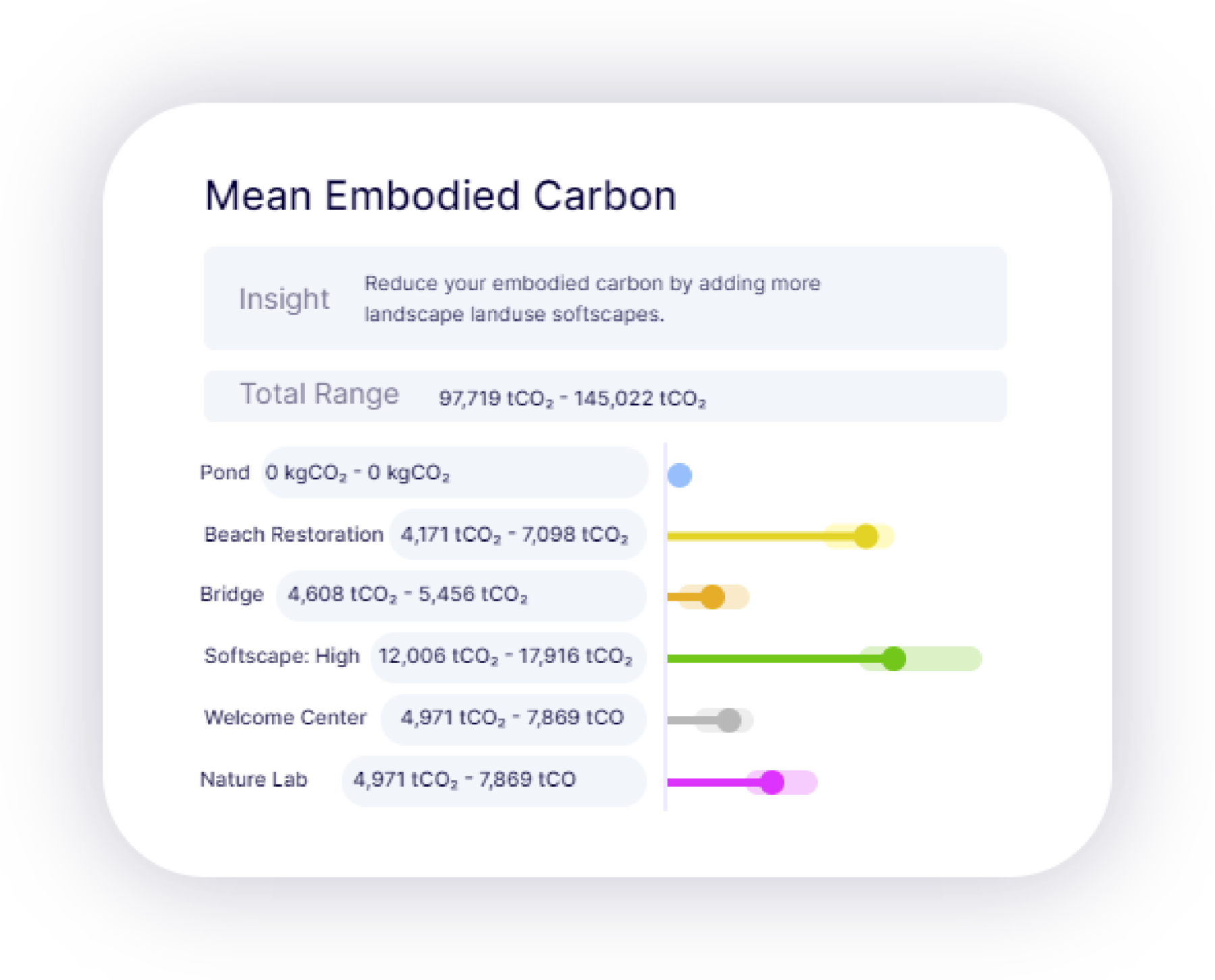
The tool offers insights about how best to reduce embodied carbon within the design, promote net carbon sequestration landscapes, and be considerate of carbon stored in construction materials
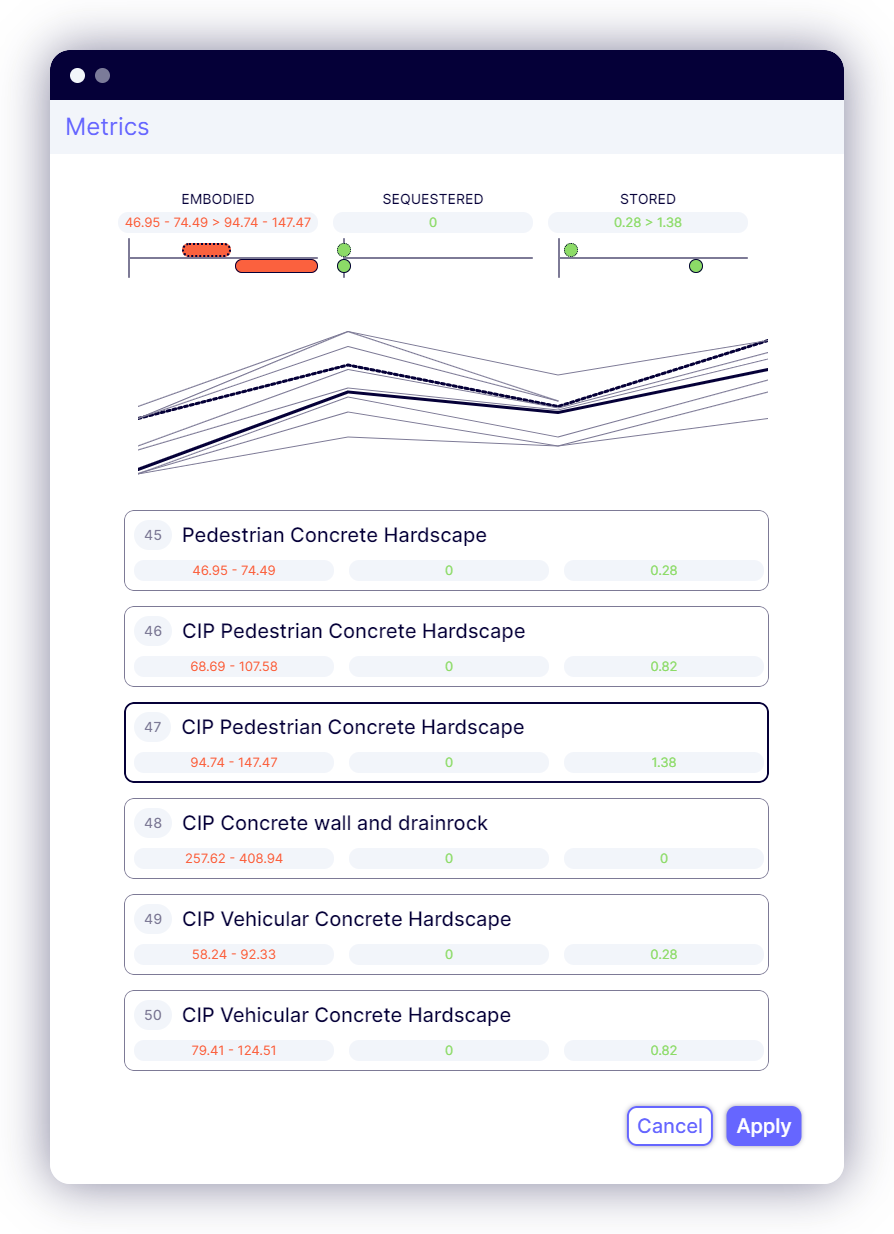
Users can compare metrics for different materials, ecologies, and building types
A multi-disciplinary team of architects, landscape architects, planners and programmers developed the user interface for preliminary site planning using existing databases, modeling sample scenarios in existing tools, integrating peer-reviewed research for key metrics, as well as best practices from our experience.
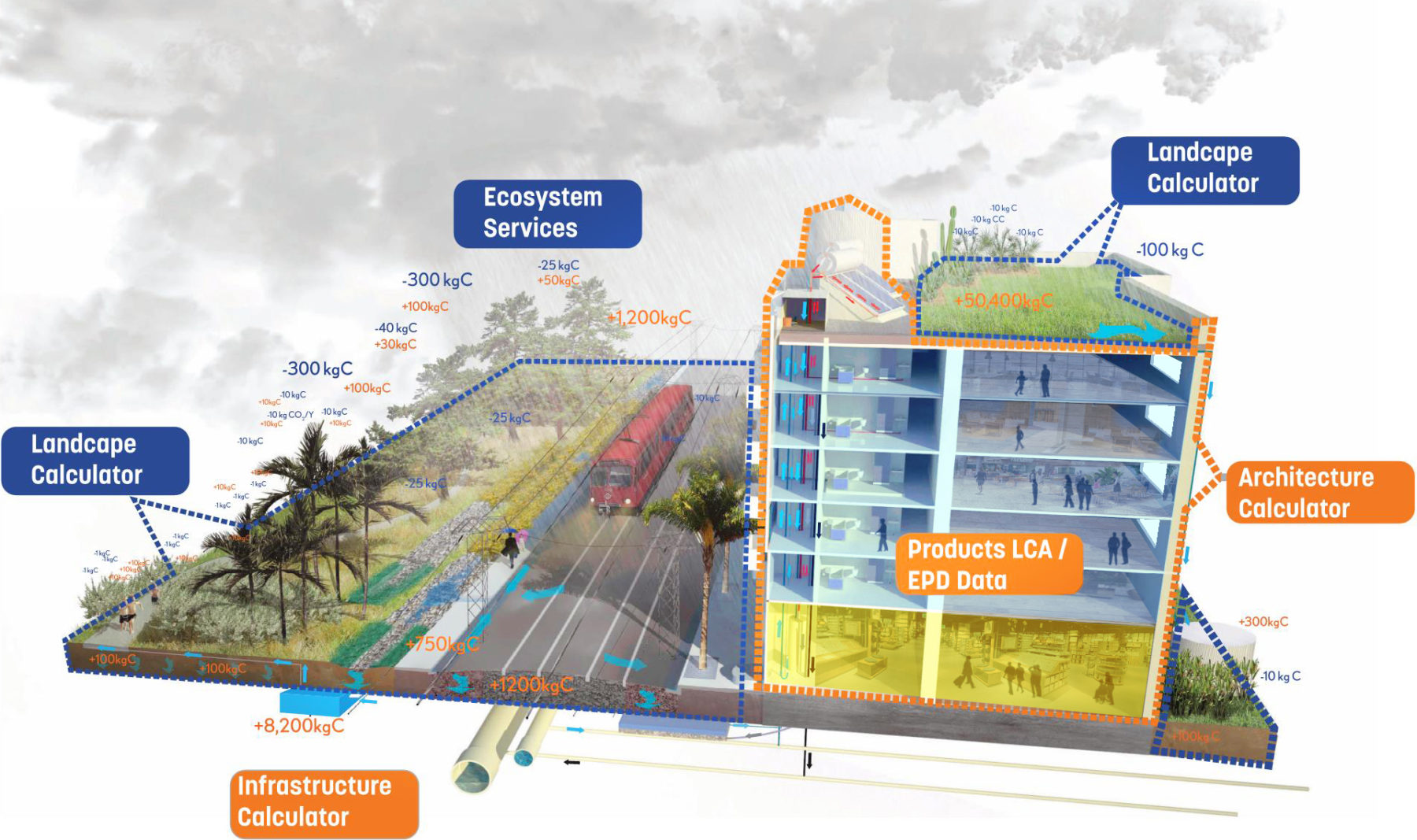
This tool brings together a range of discipline-specific data sets, references, tools and calculators that cover the built environment through land use mapping
This Carbon Conscience application is a strategic tool in our arsenal for environmentally responsible design, helping designers and planners see the potential impacts of projects during the earliest stages of projects, when subtle shifts in landscape and program can have huge impacts on the ultimate emissions. We have already found on internal projects that land use decisions, structural system recommendations, and restoration ecosystem target data all embedded within this application has enabled teams to make more verifiable recommendations to clients and municipalities regarding targeted carbon budgets, and in some cases, demonstrating how modifying these assumptions can as much as half potential project emissions.
This tool is accessible here, including recorded how-to videos, the associated white paper, and additional presentations, links and references. This is a gamma version of the tool released after in-house testing, and will be curated pending feedback internally and from future users – we invite the design community, clients and academics to review and test, provide feedback, and in time we hope the tool will grow in depth and complexity to meet the needs of the design community.
Check out the Carbon Conscience how-to guide below.